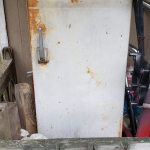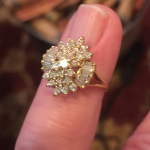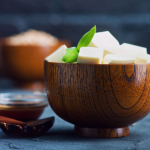Post-hoc screening revealed that human anatomy condition improved significantly regarding random class between the two testing incidents (? = –0
Human anatomy reputation increased just regarding haphazard category and you may reduced during the another about three organizations (figure 1a)
| reaction | repaired outcomes | ? 2 | d.f. | p |
|---|---|---|---|---|
| SMI | sampling feel | 0.00 | 1 | step 1.100 |
| cures | step step three.70 | 3 | 0.296 | |
| gender | 1 |
Dining table 2. Limited enough habits who has predictors away from personal solutions for the emotional county of household sparrows so you can social treatment about the fresh new groups’ personality diversity. (Mathematically extreme effects (p |
||
| response | repaired outcomes | ? dos | d.f. | p |
| SMI | sampling skills | 0.00 | 1 | 1.one hundred thousand |
| sex | 1 |
Figure step one. Emotional solutions to help you societal medication: (a) looks standing (SMI), (b) heterophil-to-lymphocyte proportion (H/L ratio, indicative away from emotional fret reaction), (c) oxidative injury to lipids (i.e. malondialdehyde, MDA), and (d–e) constitutive resistant skill, given that shown as a result of agglutination get (d) and lysis get (e). Model-predicted suggest ± s.age. get each therapy category each other on pre-treatment (dark taverns) and you may post-medication (light bars) testing situations. (f) Men house sparrow painting credit: Marton Zsoldos. (On the web type in the colour.)
The improvement in body condition during the treatment period was significantly higher in the random group as compared with the other three groups (see sampling event Joliet IL escort service ? social treatment interaction in the electronic supplementary material, table S3a). 232, s.e. = 0.074, t236 = 3.123, p = 0.008), while body condition was not affected by the experimental treatment in the other three treatment groups (all p > 0.198). The rate of increase in H/L ratio was significantly higher in the high-exploratory group, and marginally higher in the low-exploratory and variable groups as compared with the random group (see sampling event ? social treatment interaction in the electronic supplementary material, table S3b). Post-hoc tests showed a weak decrease in H/L ratio in the random group between the two sampling events (? = 0.378, s.e. = 0.166, t235 = 2.270, p = 0.093), while it remained unchanged in the other three groups (all p > 0.484). H/L ratio decreased only in the random group, while increased in the other three groups (figure 1b). The increase in oxidative damage during the treatment period was significantly higher in the low-exploratory group and marginally higher in the high-exploratory group as compared with the random group, while the variable and random groups did not differ (see sampling event ? social treatment interaction in the electronic supplementary material, table S3c). The post-hoc tests revealed that individuals from the variable group showed a age levels between the two sampling events (? = 0.439, s.e. = 0.179, t233 = 2.452, p = 0.058), whereas birds from the other three treatment groups were not affected by the experimental manipulation (all p > 0.140). MDA levels (i.e. oxidative damage to lipids) increased in high- and low-exploratory groups, but decreased in the variable and random groups (figure 1c). Individuals’ personality was not in the individual solutions in the mental status in itself or perhaps in interaction which have social treatment, hence is dropped regarding patterns (table step 1, digital additional situation, desk S3). Constitutive inherent disease fighting capability enhanced throughout the therapy because both agglutination and you can lysis scores more than doubled between them testing situations, and you may people had large human body status than girls (dining table 1, digital additional procedure, table S3). (b) Shannon range of group’s identificationTo assess the role of personality diversity of experimental social groups, we tested whether the calculated Shannon diversity index predicted the individual’s physiological responses to social treatment. The sampling event ? Shannon diversity interaction was highly significant for body condition and oxidative damage (figure 2), while it was non-significant for H/L ratio and the activity of constitutive innate immunity as measured by agglutination and lysis (table 2, electronic supplementary material, table S4). The main effect of Shannon diversity was non-significant for each response variable (table 2, electronic supplementary material, table S4). Regarding the significant interactions, we found that body condition increased (? = 0.146, s.e. = 0.067, ttwenty four.nine = 2.195, p = 0.038), while oxidative damage to lipids (i.e. MDA) decreased (? = –0.170, s.e. = 0.067, t66.0 = 2.532, p = 0.014) with increasing personality diversity in the post-treatment sample (i.e. after exposure to social treatment), while these two response variables were unrelated to Shannon diversity in the pre-treatment sample (i.e. prior to social treatment; all p > 0.413; table 2, electronic supplementary material, table S4, figure 2). The other three response variables (i.e. H/L ratio and agglutination and lysis) were unrelated to Shannon diversity in either the pre-treatment or the post-treatment samples (all p > 0.231 and all p > 0.578, respectively). |







